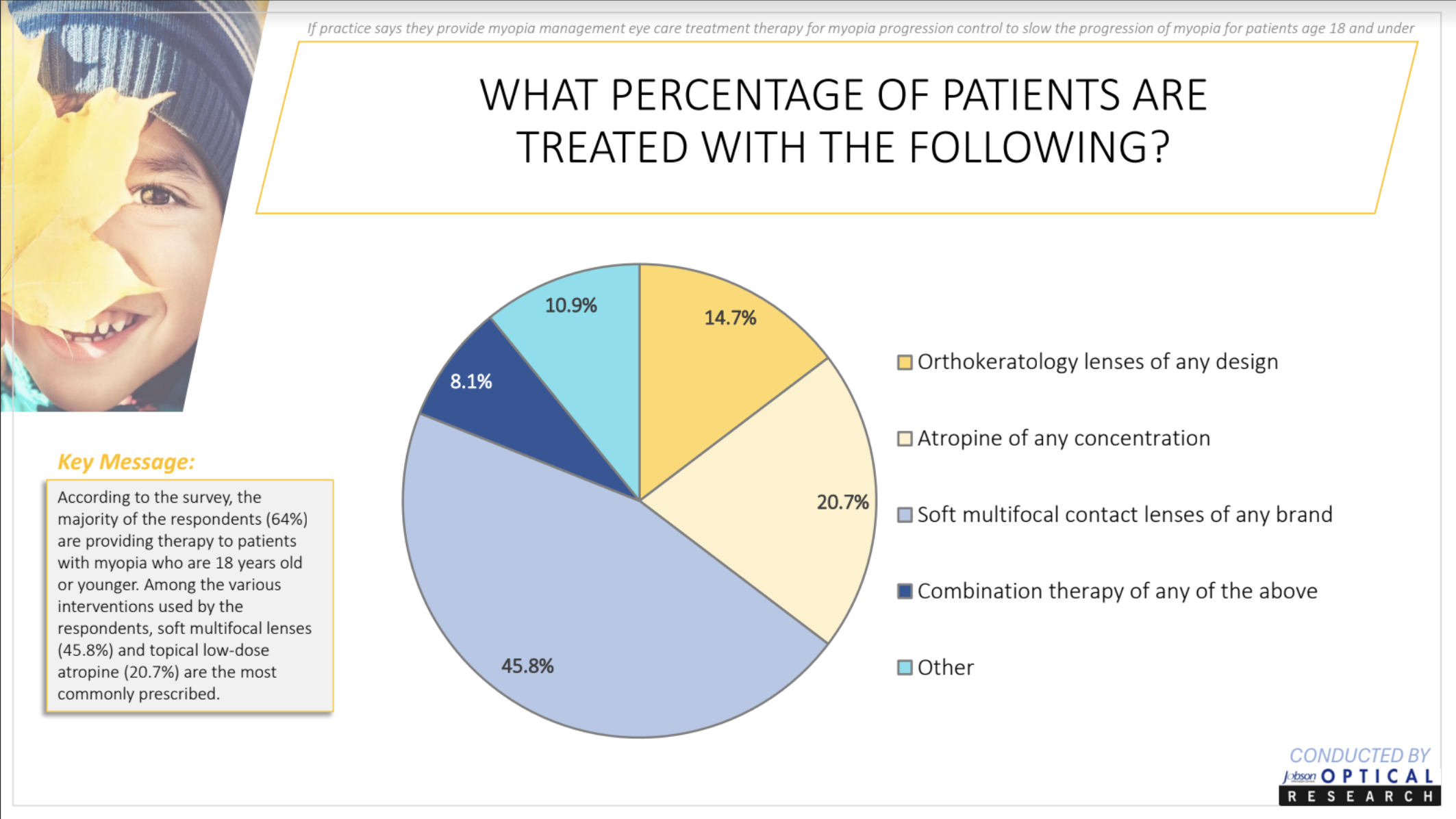Optometry is in prime position to proactively prevent, detect and treat myopia. An emphasis on early detection and disease progression control is imperative. Encouragingly, a new survey of eyecare practitioners (ECPs) conducted by Jobson Optical Research and Review of Myopia Management found that 63.6% of respondents said they provide treatment therapy for myopia progression control.
The survey was conducted from December 11 to 18, 2023. According to Jobson, the goal of the survey was to identify trends consistent throughout the eyecare industry, especially as the myopia management field continues to expand. By accessing these survey results, ECPs can learn from their colleagues and work to improve their myopia management offerings for their patients. The report is available for free here.
 |
| Eyecare professionals’ top choices for slowing the progression of myopia are soft multifocal contact lenses, but they employ a combination of treatments as well as lifestyle interventions. Photo: Jobson Optical Research. Click image to enlarge. |
The survey involved 461 qualified respondents who were practitioners in the United States and saw patients 18 years old and younger. Of this cohort, 293 respondents (63.6%) said their practice provides myopia management treatment therapy for myopia progression control to slow the progression of myopia for patients aged 18 and under.
Nearly 23% of myopic patients 18 and under were receiving some form of myopia therapy, but a large proportion of myopic children and adolescents were not receiving treatment. Among the various interventions used by the respondents, soft multifocal lenses (45.8%) and topical low-dose atropine (20.7%) were the most commonly prescribed.
To specifically slow progression, respondents said that they prescribe “multifocal soft contact lenses” as their myopia management therapy of choice (78.8%), as well as “more time outdoors” (68.8%). “Topical low-dose atropine” (55.8%) and “visual hygiene recommendations” (54.8%) were their next most prescribed interventions.
The survey revealed that about 32% of respondents who offer myopia management therapy said that they recommend initiating treatment for childhood myopia “as soon as a child is diagnosed as a fast progressor (-0.75D progression or higher per year).” About 20% said that they initiated treatment for childhood myopia “as soon as a child is diagnosed with -0.50D or more of myopia.”
“Early treatment is critical because every diopter matters. Progression is highly likely once a child is identified as pre-myopic or myopic,” Jobson noted in a press release on the survey. “Reducing myopia by 1.00D reduces the likelihood of a patient developing myopic macular degeneration by about 40%.”
Respondents said that “treatment not covered by vision or medical insurance” (35.4%) was the greatest barrier to parents saying yes to myopia therapy for their children.
More than half of respondents (56.4%) perform “dry refraction every six months” on myopic children undergoing treatment. Still, 21.3% of respondents said that they perform “axial length measurement every six months,” and 12.7% said they perform “axial length measurement once per year.”
If practitioners said they provided myopia management treatment therapy for myopia progression control to slow the progression of myopia for these young patients, 58% ranked myopia management as “very important” and 34.8% ranked it as “important. However only 20% of these said that they were “very knowledgeable” about managing progressive myopia in patients. “Online as well as in-person CE meetings,” and “online journals” were cited as the preferred sources of education on myopia management.
“There is a significant opportunity to educate eyecare practitioners about why and how to provide evidence-based interventions for myopia management therapy,” Jobson commented on the findings.

